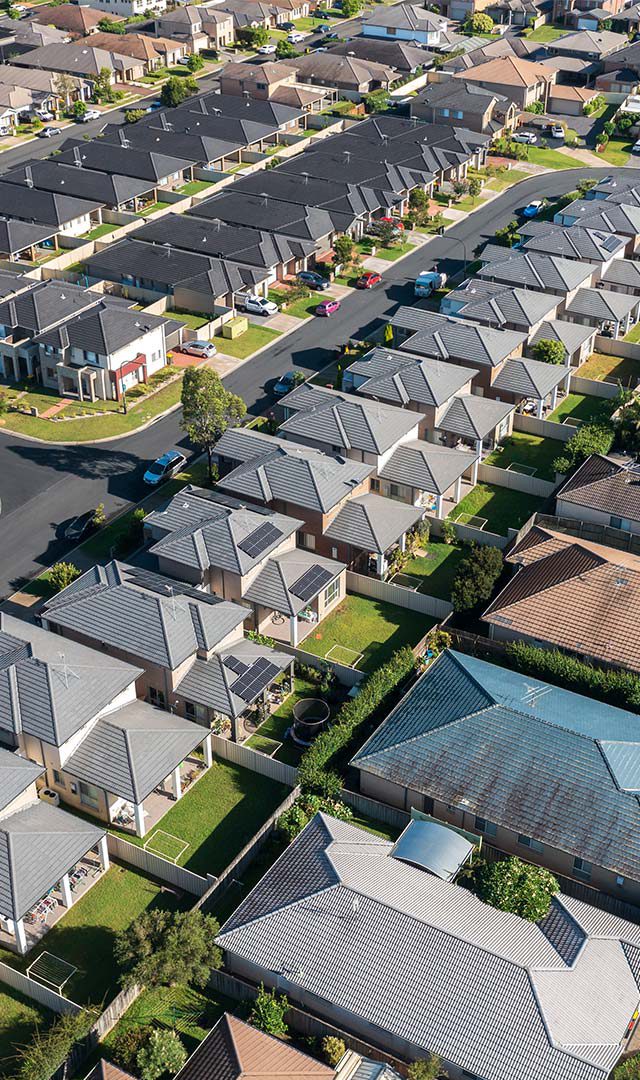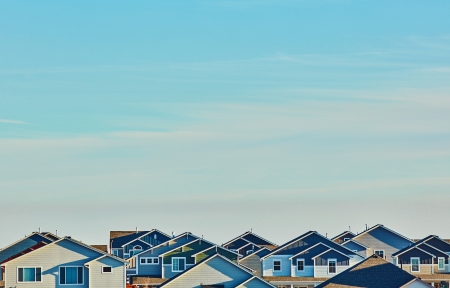April 2021
Overview
- The NSW treasurer has proposed sweeping changes to the current stamp duty system.
- The consultation period for the proposed changes closed on March 15, 2021.
- Purchasers to be given choice of paying stamp duty or ‘opting-in’ for annual property tax.
- The annual property tax would be based on the unimproved land value.
- Scheme to be phased in with an initial price threshold, although yet unknown.
- Anticipated initial hit to the NSW budget in the short to medium term with reduced stamp duty revenue.
- There exists the potential for an initial increase to house prices – approximately equivalent to the current stamp duty amount – and the creation of a two-tiered market.
THE CURRENT FRAMEWORK
The current NSW stamp duty system has been an integral part of the NSW tax system since 1865 and provides government with a source of revenue relative to the performance of property markets. Recently, the NSW Treasurer Dominic Perrottet described the current system as an impediment for purchasers to enter the property market, particularly the young and those living in Sydney. Moreover, the system is considered by many to be outdated and not reflecting current work or living habits of the general populace, which is now significantly more transient and migratory than in previous generations.
A fixed, up-front duty for every property transaction is considered by the Treasurer to be a hindrance to allocating both human and housing resources to its most economical use. The NSW government is hoping a new proposed model will enable first home buyers to get their foot in the door, encourage people to purchase houses that meet their current needs (for both personal and employment reasons), and prompt retirees to right-size.
In November of 2020, NSW Treasury released a consultation paper outlining the proposed framework for a new property tax to replace both stamp duty and land tax within NSW. The public consultation timeframe began at the announcement of the budget in November 2020, and concluded on 15 March 2021, with a feedback report due from Government in mid-2021.
The proposal seeks a phasing out of stamp duty and land tax in their current form. Broadly, it is proposed that purchasers will be able to choose between the current system of paying a one-off stamp duty amount (and land tax where applicable) at the time of purchase, or instead opt in for a smaller annual property tax based on the unimproved value of the land.
THE NEW FRAMEWORK
In brief, the following is proposed:
- A choice between paying stamp duty upfront, or ‘opt-in’ for the annual property tax.
- Once the property has been opted in, subsequent owners must pay the property tax.
- No requirement to pay land tax once the asset has been opted into the scheme.
- Those who have already paid stamp duty, won’t be subject to an annual property tax.
- A lower rate for owner-occupiers, and higher rates for investors and commercial properties.
- An initial pricing threshold to limit the number of properties eligible to opt-in allowing for a ‘smoother’ transition and revenue/debt ‘neutrality’ in the long term.
- Hardship provisions to ensure no homeowner is forced to sell their property to meet property tax liabilities.
- Protections to ensure no rental increase without the tenant’s consent.
- Existing stamp duty concessions for first home buyers to be replaced with a new grant up to $25,000.
Potential property tax rates outlined in the Consultation Paper are:
- Residential owner occupiers to pay $500 + 0.3% of the unimproved land value. Residential investors to pay $1,500 + 0.3% of the unimproved land value.
- Primary production land will incur a 0.3% of unimproved land value payment.
- Commercial property will be liable for 2.6% of unimproved land value.
What will it mean for our economy and industry?
Although considered by many to be a welcome and long overdue shake-up of the existing framework for property taxation and duties, the introduction of the new model has created some concerns over unintended implications.
Of initial concern is whether the proposal will result in a significant budget shortfall in the short to medium term. The NSW Government has indicated that property taxes, including both stamp duty and land tax, accounts for approximately 36% of NSW tax revenue. By their own estimates, the initial hit to the budget bottom line is forecast to be as much as $2 billion in any year. As recently as February 2021, stamp duty in NSW reached a record level of $816 million due to heightened activity across property markets, eclipsing the previous record of $636 million in 2017.
The proposed pricing threshold (amount not yet known) will allow for a gradual transition to the scheme and leave high value properties available for duty and immediate taxation. The NSW government has signalled its intent to borrow during a period of record low interest rates to cover any shortfall during the initial phase, and forecasts this will be repaid / reach neutrality in circa 50 years as more and more properties are opted in.
The proposed ‘opt-in’ system has been questioned for its effectiveness in transitioning away from stamp duty to the new property tax system. There is a risk the current model will create a two-tiered marketplace: one for properties that are opted-in, and those where the option of stamp duty still applies, each driven by the differing motivations of competing purchaser profiles.
In addition, any perceived savings to the purchaser in the short term from opting into the system, could unintentionally increase the cost of housing. Without the requirement for the purchaser to save for and fund stamp duty (in addition to a deposit of 10% to 20% of the purchase price), and subject to the treatment of the property tax by financiers when assessing loan applications, this could materially increase purchasing power of market participants. This in turn could flow on to an increase in property prices equivalent to the amount of the stamp duty “saving”.
The ‘opt-in’ system has also been criticized by some observers to potentially worsen the ‘lock-in’ effect, whereby current owners are further disincentivised from trading out of their home. These owner occupiers, say empty nesters who currently pay no annual property tax, may elect to remain in situ. A barrier to right-sizing would still be in place either by way of stamp duty or opting for a scheme which would increase annual financial obligations at a time when entering or nearing retirement, despite the proposed hardship provision.
Putting it into practise
Using the example of a recent sale of an inner-city terrace in Sydney, at a purchase price of $1,500,000 with an unimproved land value of $850,000 assessed by the NSW Valuer General, the upfront stamp duty would be $67,505. Adopting the possible property tax framework (annual charge of $500 + 0.3% of unimproved land value) the annual charge would be $3,050; an amount equivalent to 22 years of annual payments (without accounting for escalation in land values or increases to the rate of taxation) until equating to the up-front stamp duty cost.
Consider the buyer profile of a young professional couple looking to enter the property market, although with the view to upgrading in five to 10 years’ time. There is a clear financial incentive to opt for the annual property tax at the time of purchase. From the above example, there is a saving of $52,255 if the property were to be held for five years, decreasing to $37,005 if held for 10 years, assuming no escalation in land value or increase to the rate of taxation during this time.
If this same property were to meet the needs of a buyer as their ‘forever home’, there would be an incentive to pay stamp duty at the time of purchase particularly if it were intended to remain in occupation for a period greater than 22 years. More broadly, this purchaser is likely to preference properties that are yet to be opted into the scheme, still keeping the option of stamp duty on the table, to the exclusion of those now subject to the annual payment.
In the previous example of the young professional couple, where does this saving end up? It would be academic to suggest it is transferred to savings to meet future obligations, such as an annual property tax. However, in the context of the current market, the reality is that rather than fail to obtain the property, these purchasers will likely factor the perceived upfront saving into their purchase price as they compete for limited supply in a rising market.
What about international investors and non-residential property?
It is unclear in its current form whether international investors will be given both options, and if an additional surcharge will be added if they choose to ‘opt-in’, similar to existing surcharges for both stamp duty and land tax.
It is also unclear whether existing exemptions – for example not-for-profit entities, registered clubs, age-care, retirement, and so-on – will still be available. Bearing in mind the two largest exemptions (owner occupied and primary production properties) will not be exempt, it remains to be seen if these existing exemptions will survive the shake-up.
And for mixed-use property, how will the current proposal treat a single title premises consisting of both residential and non-residential uses? Existing information provided to date would seem to be silent on this point.
How will new property created under the scheme be dealt with? Will purchasers still have the option to opt in, or does this trace back to the circumstances of the property developed? Such are just some of the questions that remain unanswered. Naturally, there will be more scenarios that present themselves as we navigate the implications of a new taxation methodology, aligned to the current market participant circumstances.
Where to from here?
With any significant reform, there must be a vision and cause for change. The proposal put forward by the NSW government certainly addresses both of these. However, with the first real test of public scrutiny now upon us, it will no doubt be a moment of reflection for the property industry as a whole, as we consider the best way forward for all market participants.



